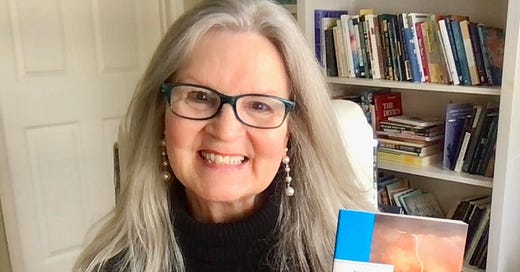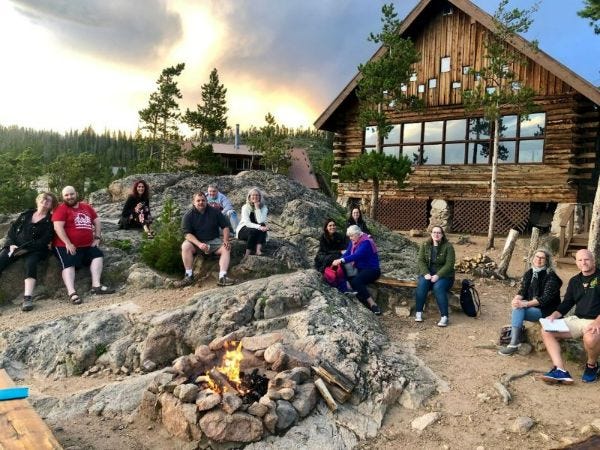Hi friends,
If you write enough flash fiction you become a bit phobic of any sort of “telling.” We flash writers just don’t have room for that stuff. Given so little space, we want as much of our flash to be vivid and present and fully dramatized as possible. But there are no absolutes. And exposition, done well, can broaden the scope of a flash or add depth and layers to it.
"Show don't tell" is drilled into us as writers, but this "rule" is not sacrosanct. And certainly more advanced writers needn't be scared of telling here and there. But as always with flash fiction, we have to be very picky about what we include. Flash writers become particularly skilled at weaving in backstory with a smattering of well-chosen details and dramatized flashbacks.
The key to writing good exposition is to treat it with as much care as you do all of your other writing. You don’t want it to be boring. You don’t want to include anything that’s redundant or unnecessary. You still want specific, concrete details. You still want to include sensory information. You want to infuse your exposition/backstory with voice and verve. And it's entirely possible to do this!
So basically, any exposition you include in your flash should:
be interesting and/or moving
be written in an interesting way (voice)
be specific and concrete
further our understanding of the character (what is the subtext of “he worked ten different jobs before he was twelve”?)
compel us to keep reading
be woven through the action
BE BRIEF
Most of the time you will find yourself editing OUT most of the backstory and exposition from your first draft. Remember, drafting is the necessary first step of you telling the story to yourself first. Then you can decide what the reader needs to know.
YOUR PROMPT
Creating Vivid Backstory for Your Characters
I want you to choose one or two characters from a draft you've already written. You are going to create a history for that character. You no doubt already have some of their history in mind, but I want you to go a little deeper now.
First, just free write about the character. On a piece of paper, write their name several times down the sheet, then go back and just quickly jot down some "historical facts" about them. For example:
Betsy was born six weeks premature.
Betsy stole candy and sold it to her friends to support her comic book addiction.
Betsy wrote a bestselling novel at the age of ten.
Betsy’s middle name is Alfred.
And so forth. You may get some surprises here! Allow whatever comes to you. Probably something will "stick" and you'll want that to be an actual part of your character's backstory.
Now your task is to write a piece of exposition about that historical fact. You may do this however you like. You may simply write a paragraph of straight exposition or you may write it in the form of a flashback. If you REALLY want to challenge yourself, you may weave this historical information into a dialogue between two other characters in your story. This can be GREAT if done well but beware of the dialogue sounding stilted. Smart readers know when you're just having people say things for their edification!
Remember that you still need to include strong, specific details and sensory information, even in your exposition.
But the idea is that you are giving us some history/background about your character that is interesting and compellingly written. You may or may not end up including this in your story, but it’s good to develop some facility for deft exposition writing, even in your flash fiction. This could potentially become a stand alone flash. Perhaps a piece to include in a linked collection.
Exposition is another tool for your writerly toolbox and if used judiciously, can really enrich your stories, so don't be afraid to use it.
RECOMMENDED READING
Norton’s Flash Fiction America edited by James Thomas, Sherrie Flick, and John Dufresne, launched in February and is already getting great reviews. Can’t recommend it highly enough to flash writers and creative writing instructors. I’m in auspicious company alongside Aimee Bender, Pamela Painter, Amy Hempel, Rion Amalcar Scott, Lydia Davis, Venita Blackburn, Stuart Dybek and so many more.
Ad Hoc Fiction’s Flash Fiction Festival Five is out now and it’s brilliant.
BEFORE YOU GO
I’m honored to be judging The Cupboard Pamphlet’s Annual Chapbook Contest and the deadline is June 1st! Submit to win publication by a press that makes beautiful, tiny books and $1,000!
Want to write with Nancy Stohlman and me this summer? There are two spots still available for High Altitude Inspiration in the Colorado Rocky Mountains this AUGUST 15-20TH! This will be our third retreat there. We love it so much! Find more information HERE.
If you have found these craft articles, writing prompts, and recommended readings useful, and you’d like to support my work in some small, tangible way, I would be most grateful!
Thanks, as always, for stopping by. Please feel free to leave a comment or question below.







Love this as always, Kathy. I often say with show vs tell that it comes down to how quickly / easily we want a reader to acquire knowledge (like "All day I’ve been angry in upstate New York" at the start of "Inheritance" by Grace Q. Song: https://www.smokelong.com/stories/inheritance-2/); and I love your seven-point checklist as something that sits alongside that. (Also, is it okay that I quietly dislike Betsy for writing a bestselling novel before the age of ten?)
Interesting and helpful tips, Kathy. Thank you!